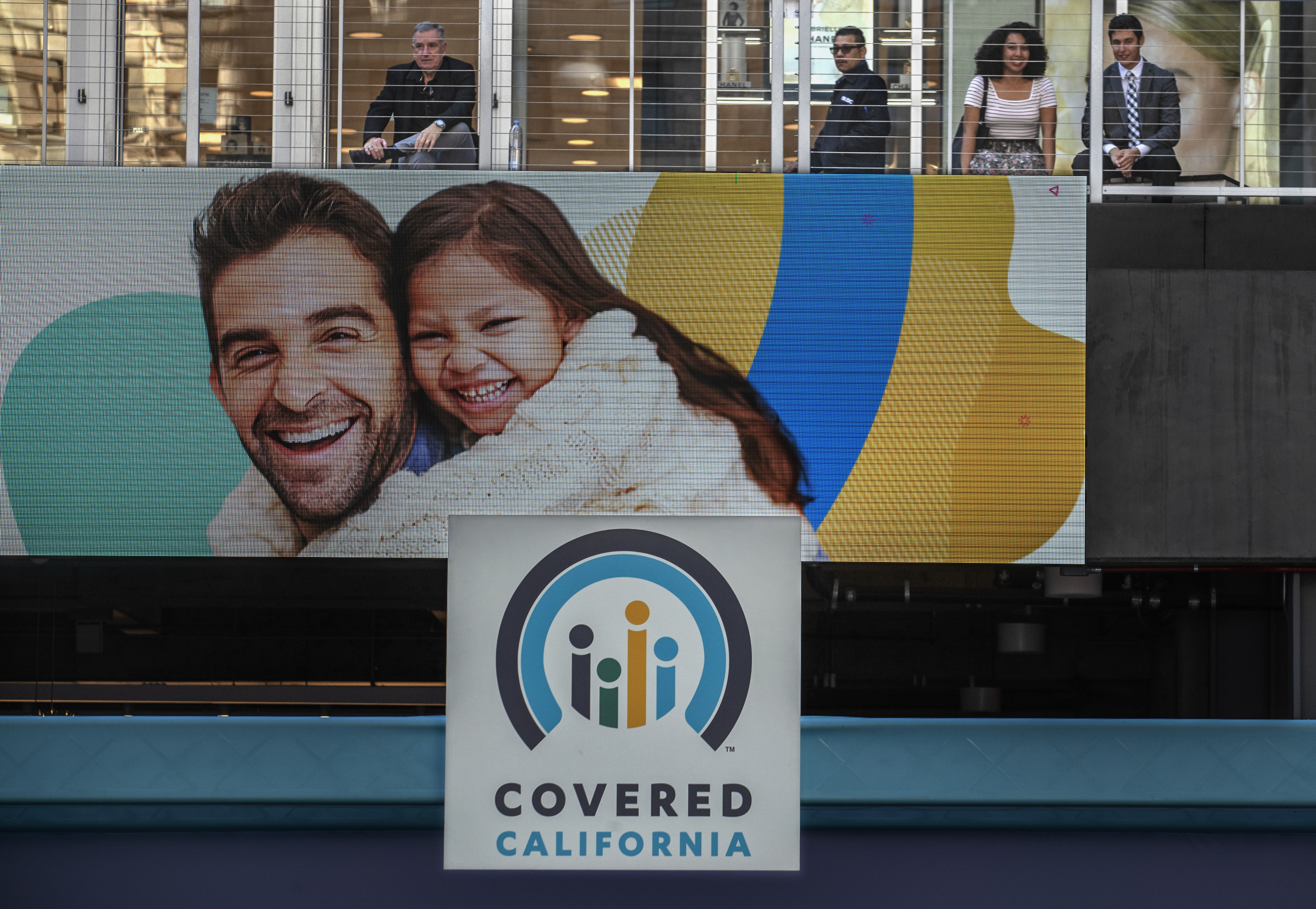  |
| November 1, 2022 |
 Banners promoting Covered California hang at the Bloc in downtown Los Angeles at the start of open enrollment in 2019. (Mel Melcon / Los Angeles Times) Banners promoting Covered California hang at the Bloc in downtown Los Angeles at the start of open enrollment in 2019. (Mel Melcon / Los Angeles Times) |
By Jon Healey Good morning, and welcome to the Essential California newsletter. It’s Tuesday, Nov. 1 — T-minus seven days until the midterms. I’m Jon Healey, senior editor of the Utility Journalism Team, offering explanations and answers from my perch in South Pasadena. There’s not just an election looming, but it’s also a time when millions of Americans have to decide what kind of health insurance to carry for the coming year. Heaven forfend that we should ever need the coverage, but it’s a risky bet to go without insurance if you can afford it. Open enrollment for Medicare began on Oct. 15 and runs through Dec. 7. Many employer health plans, which typically have shorter open enrollments and variable dates, have also started briefing workers on their options and calling on them to make decisions. And for anyone not covered by an employer’s comprehensive health plan, today is when open enrollment begins at Covered California, the health insurance marketplace created by the 2010 Affordable Care Act. Covered California’s subsidized policies are available to some households that have access to an employer’s health plan too, which I’ll explain in a bit. I’ve been writing about healthcare policy for more than a decade, and I still dread open enrollment. There are just so many variables — premiums! deductibles! copays! networks! tax strategies! — that I struggle to figure out the right path. And I like math. In part, that’s because the system makes you bet how much care you and your family will need in the coming year. If you don’t think you’ll need much care, you can go for a high-deductible plan and save on premiums. But if you bet wrong, the pain will be both physical and financial. (One other pain point: Premiums are rising about 6% on average in the coming year, a sharper increase than we’ve seen in the last few years. Oddly enough, the pandemic held insurance costs down by reducing the demand for healthcare, but things are now getting back to normal.) Covered California has its issues, but it has worked to simplify the choices faced by its customers, who don’t have the benefit of a company human resources team to guide them. It has standardized the insurance plans offered in the various tiers to help you make apples-to-apples comparisons. For example, the difference between one “silver” plan and another boils down mainly to provider networks and premiums, not how much you’ll pay for which services. Covered California also provides easy-to-grasp quality ratings, and is imposing standards on insurers to push them to improve patient outcomes in key areas. Yet there is one not-so-simple aspect to getting insurance from Covered California: figuring out whether you and your family qualify for subsidies. If your employer offers you health insurance, you won’t be eligible for discounted premiums from Covered California unless your health plan at work would cost more than 9.12% of your household’s annual income. But your spouse and kids might be eligible for Covered California’s subsidies if the cost of your employer’s family coverage crosses the 9.12% threshold. In that case, the lowest-cost approach may well be for you to carry two policies — one for you from your employer, and one for the rest of your family from Covered California. But that might mean two different networks of doctors, dentists and other healthcare professionals. I explained the situation in greater detail in this piece. But don’t let the complication stop you from signing up for coverage! In California, you have to — the penalty for going uninsured is at least $850 per adult and $425 per dependent child younger than 18. |
No comments:
Post a Comment